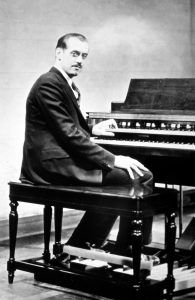
It’s been over 80 years since the world saw the first Hammond Organ,
and it all started with a genius named Laurens Hammond.
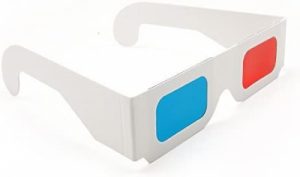
Did You know the first successful 3D movies to be shown in Theatres were the result of a system designed by Laurens Hammond? It was one of his first inventions. They’re still used occasionally today; but what really got things started was Laurens’ invention of a synchronous motor that ran on the then-new 60 cycle electric supply furnished to individual homes.
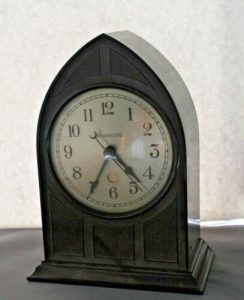
Today we take electric power for granted, but in the 30’s, ” juice” coming out of the wall was often unstable. Hammond’s motor ran at the same speed no matter the voltage, and it was completely noiseless. Whatever could he do with this invention? Hammond hit upon the idea of applying his motor to run a clock. Because it was silent, there was no “tick-tock”, and his electric clock was an immediate success. Folks who forgot to wind their spring-driven clocks were no longer late for work! Many are still in use today, keeping very accurate time, and some have become very valuable collector’s items, though surprisingly, certain models can be found online at very reasonable prices.

The great depression of the 1930’s caused the bottom to fall out of the Hammond Clock Company. Hammond tried other applications, like an automated bridge table using his motor to drive a mechanism dealing cards to each player. The table gave Hammond a slight lift financially, but it, too, soon faded.
Laurens Hammond often remarked-when faced with having to come up with a new idea, the smart thing for an inventor to do is put together the old tricks you have done before, and maybe even use some of the other guy’s tricks as well.
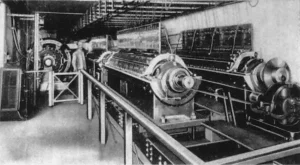
At the time, there was an effort underway by inventors to electronically replicate the sounds of a pipe organ, but no one had succeeded. Hammond’s associate George Stephens was aware of how one of the very first electric musical instruments created its tones. Around 1900, an inventor named Thadeus Cahill came up with the Teleharmonium. The Teleharmonium was a huge, mechanical system utilizing garbage can lid-sized (and larger) cylinders to generate sounds. The entire system required 30 boxcars to move, and a large multi-floor building in which to install it. The intention was for the music made by this beast to be piped into houses by means of telephone wires in a subscription scheme. Needless to say, this system failed, but the basic working idea had merit.
Although Laurens Hammond wasn’t a musician, he loved to hear the organ when he went to church with his mother as a child. Using a much, much smaller design based on the ideas of Cahill’s instrument, coupled with the synchronous motor, Hammond came up with what he called an “Electric Flute”. It Worked! At first he thought it would just be a toy, a plaything, selling for thirty to forty dollars, but thinking again, he saw that this could be a major advancement in musical instruments. What was a Pipe Organ other than a big box of “flutes”? On this basis, he proceeded to sketch the blueprints for what would become the Hammond Organ.
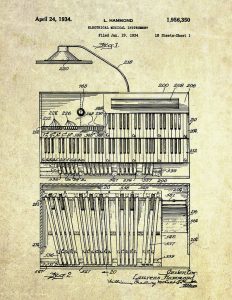
On April 24th, 1934 Laurens Hammond filed for a patent on his musical machine. The document was a whopper, spanning 18 pages and twenty thousand words. At that time the country’s top industrialist was automaker Henry Ford, who loved gadgets of all sorts. He got wind of Hammond’s patents, and sent men to Chicago to order six organs immediately. The problem? Hammond’s Organ hadn’t even gone into production yet.
Summoning Hammond to Dearborn, Ford wanted to find out if he could help the fledgling organ company get up to speed. Hammond declined Ford’s generous offer of material participation, but the experience cemented Hammond’s idea he had a winner. It is a common misperception Henry Ford got the first Hammond Organ. Mr Ford placed the first order, but he didn’t get the first organ. That privilege didn’t go to composer George Gershwin, either, as widely reported
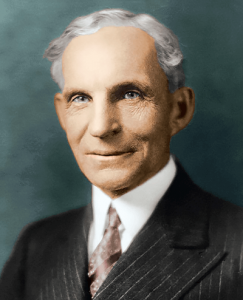
The reality is actually much more pedestrian. After Laurens got the company up and running, Hammond’s Serial Number One went to a dealer in Kansas City, where it was used for years as a traveling demonstrator. Upon its retirement, it went to the Smithsonian in Washington, where it now resides. Henry Ford eventually DID get his six Organs, one of which is now displayed in the Ford Museum in Dearborn, Michigan.
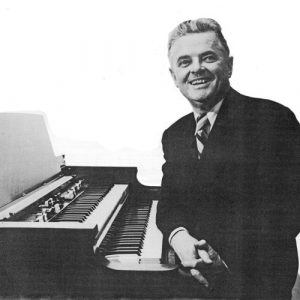
The Hammond Organ was an immediate success, and before long, Churches, Theatres and Concert halls were humming to the Model “A”‘s sound. The Great Theatre Pipe Organist Jesse Crawford switched from the Mighty Wurlitzer to the Hammond, and made popular recordings, some of which, like his Wedding Music offerings, remain available to this day. Another early star of the Hammond was Ethel Smith, whose dazzling technique (and equally dazzling looks) took her to the heights of stage and screen.
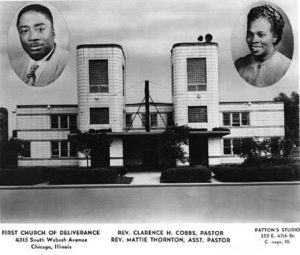
On the west side of Chicago, near the original Hammond Factory, The First Church of Deliverance’s Piano played its last note. The Church’s flamboyant Minister, Clarence Cobbs wanted something different, and procured a Hammond Organ to replace the piano. Rev Cobbs was also one of the first African-American pastors to have his own radio show. He immediately began to use the Hammond Organ on his broadcasts, and it was a hit! Subsequently, a tradition was born that has never stopped growing, and has had incalculable influence on nearly every facet of music. Hearing the Hammond in Church inspired Wild Bill Davis to try the instrument in a jazz setting. Fats Waller followed, and an entire movement in Jazz was born. From there, the Hammond became popular in R&B, Rock, Country, Blues, and most every genre in music.
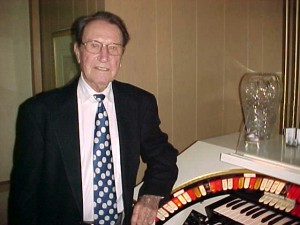
But the Hammond needed one more thing to become the King Of Instruments-The Leslie Speaker.
We think of them now as inseparable, fraternal twins, but the truth shows the Hammond Organ’s Birthday pre-dated the Leslie Speaker by seven years. The man behind the newer invention was Donald J. Leslie, an engineer who worked for a firm making Hammond Organ parts. Don was a keen music buff, and became interested in this new, marvelous instrument; but there was something that just wasn’t right to his ear. Laurens Hammond intended his organ to play in churches and classical concert halls, filling the role of the Classical Pipe Organ. Don, loved the Mighty Wurlitzer Theatre Pipe Organ, a totally different animal, indeed! Don wished the Hammond Organ could sound a little softer, like the Tibia Pipes on his beloved Wurlitzers. After some experimentation, Don Leslie hit on an idea that would put “motion” into the sound of Hammond Organ.
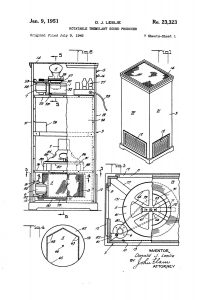
Don Leslie capitalized on a principle called the “Doppler Effect”. It’s why a train whistle seems to go down in pitch when a train passes you. Don took a horn speaker and mechanically made it turn around in a circle. Bingo! a legend was born. A fun fact here: Don built his first prototype using a closet for the enclosure!
The spinning treble horn and bass rotor gave the Hammond Organ a “tremulant”, as it’s called in the pipe organ world. Pitch-changing vibrato, volume-changing Tremolo, and a little “whoosh” of moving air all put together. It made the Hammond Organ sound completely different. Actually, not quite exactly like a Theatre Pipe Organ, but a lush, rich, distinctive sound of its own. The Hammond’s life in all popular music-Jazz, Rock, Pop, and all places in-between was born at that moment.
Don Leslie thought he had hit on a miracle, and rightly so, He promptly took his hot invention directly to Laurens Hammond but as fate would have it…Laurens Hammond hated the idea! He meant for his organ to play church and classical music, wanting his organ to sound like a traditional, classical/church pipe organ, and nothing but! Even though Mr. Hammond handed Don Leslie his hat and showed him the door, Don knew he had something golden. He went into business for himself, producing the musical innovation he called the “Vibratone-Pipe Voice Of The Electric Organ” And yes, the rumor is true…Hammond Dealers were NOT allowed to sell Leslie speakers. They couldn’t even acknowledge there was such a thing. You had to go to a TV/Radio or furniture store down the block from the Organ studio to order your “Leslie”. It sounds unlikely, but that arrangement worked just fine!
The Dean of Theatre Organists Jesse Crawford was among the first to popularize the sound of the Hammond and Vibratone combination, and did he ever! For a while, what we now know as “Leslies” were popularly called “Crawford” or “Hollywood” speakers.
Musicians are resourceful, and organists from every corner embraced the combination. Somewhere along the way, the “Vibratone” became the “Leslie Vibratone” and ultimately just the “Leslie”. Eventually, a two-speed motor was added creating the distinctive “slow” or “chorale” Leslie sound. Any tune’s excitement level could be boosted by having the organist glissando to a high C while simultaneously switching from slow to fast speed.
In 1958, Don again tried to sell his company to Hammond, but the old man was stubborn, and rejected it again. Don then let the beast out of the cage, licensing his invention to many other organ manufacturers, while continuing to practically match Hammond’s organ production one-for one. Who wanted a Hammond without a Leslie? The company was so successful, that Electro-Music (as Don’s company was called) never had to advertise.
Don Leslie eventually sold Electro-Music and moved on with his life, happily, but never again made such an earth-shattering invention. He died in 2004 at the ripe old age of 93, and was as sharp as a tack to his last day. Oddly enough, Don’s personal instrument (in the picture above next to Don) was a home-built hybrid electronic/pipe Theatre Organ which did not employ one of his namesake speakers. Don never sought the limelight as some of his contemporaries did, so you don’t hear of Don Leslie (the man) in the same manner as Les Paul, Leo Fender, or Bob Moog, but his contribution was just as important.
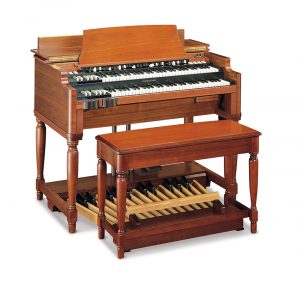
In 1954, Hammond introduced the organ that secured the legend, the Model B-3. Its Chorus-Vibrato and Touch-Response Percussion™ made sounds that were totally new and fresh. It’s hard to determine whether musicians were ripe for a new sound, or the new sounds pushed musicians into uncharted waters; but one thing is for sure: When Jimmy Smith met the B-3, music changed forever. He remains the single most popular and influential musician to touch a Hammond’s keys.
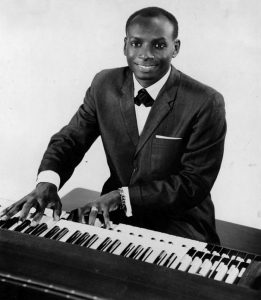
Gospel churches embraced the Hammond B-3 like no one else. The Ministers of Music elevated Hammond playing to a level leaving even the most proficient artists shaking their heads in disbelief. Many believe the Hammond Organ reaches its greatest heights in the hands of Gospel artists.
The B3 also swept the nation in pop during the late fifties. Artists such as Eddie Layton, Lennie Dee, and Jerry Burke on the Lawrence Welk TV show had hit records, and sold out concerts. But perhaps the top of the pop B-3 players was Earl Grant, whose smooth style on the number one hit “Ebb Tide” led him to become a regular guest on the Ed Sullivan show
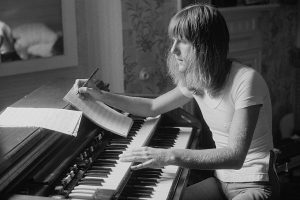
Jazz Organ became the quintessential “cool” music for the swinging Sixties, Jimmy Smith was the Top Cat, but Jimmy McGriff, Brother Jack McDuff, Charles “The Burner” Earland, Don Patterson, “Groove” Holmes and Dr. Lonnie Smith (to name a few) swung with a ferocious fervor.
The rock revolution was also in full bloom, and the Hammond Organ played a large role. Al Kooper, Brian Auger, Rod Argent with the Zombies, Steve Winwood with Traffic, Felix Cavaliere with the Rascals, Mark Stein with Vanilla Fudge, Keith Emerson with ELP, Rick Wakeman with Yes, John Paul Jones with Led Zeppelin, Jon Lord with Deep Purple, Gregg Rolie with Santana, Neal Doughty with REO Speedwagon, Dennis DeYoung with Styx, and Jerry Corbetta with Sugarloaf all had platinum hits with the B-3 front and center. Even Billy Joel’s very first album was a hard-rocking affair that found the “Piano Man” playing a highly-amplified B-3. (For vinyl aficionados, the LP was entitled “Attila” on the Epic label) Who knows how many youngsters caught the Hammond bug from hearing these (and other) stars?
The B-3 was also de rigueur for the Soul and R&B sounds of Motown and Philly. Keyboard pioneers like Billy Preston and Sly Stone all came of age as Hammond Organists in their Churches, and injected that flavor into all of the music they influenced
In 1975, the last electro-mechanical B-3 left the assembly line. About 270,000 were built. However, times were changing. Moog and Arp synthesizers were the rage of the day. Kids of the burgeoning “Mall Culture” deemed the organ “square”. Seeing leisure-suited salesmen playing songs aimed at their grandparents probably didn’t help
The Punk and New Wave movement all but rendered the organ (and most other keyboards) obsolete. Hammond’s presence in pop music dimmed. The Hammond brand was sold to an Australian firm who made organs having nothing to do with Hammond’s illustrious history, and the King of Instruments went into cultural hibernation for almost ten years.
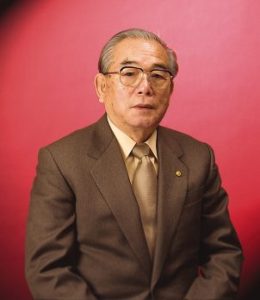
The rebirth of the Hammond Organ came from an unlikely place. Suzuki Music of Hamamatsu, Japan, under the leadership of Mr. Manji Suzuki signed a distribution agreement with the Australian firm, and in 1991, bought the brand outright. Suzuki Music had grown to be the largest manufacturer of Educational musical instruments in the world, also making fine harmonicas and pianos. Now they had a legendary brand to rehabilitate. Mr Suzuki was a fervent fan of Hammond Jazz, and many at his company were of like mind.
Mr. Suzuki’s first inclination was to bring back the electro-mechanical B-3, and his engineers came up with the plan, but in practicality, that instrument would have had a 6 figure price tag, putting it far beyond the reach of all but a few musicians. Absenting that, Mr. Suzuki charged his technical experts to imagine that same instrument in the digital realm, and progress was established. Eventually, they created and released the XB-2, the first truly portable (and affordable) Hammond. It wasn’t perfect, but it had all the right ingredients and sounded a LOT like a B-3. When put through a Leslie, the illusion became clearer. Rock groups and Jazzers took to the 35 pound beauty like a duck to water. Suddenly organ started popping up again.
And just as suddenly new young faces were making the scene. Artists like Jim Alfredson, Rev. Jimmie Smith, Red Young, Brian Charette, Larry Goldings, Joey DeFrancesco, and Tony Monaco were tearing it up in the jazz world on B-3. In the Rock, Country, Blues and Pop Worlds, there was seldom a stage seen that did not sport either a portable Hammond or actual B-3.
Hammond kicked the ball out of the park in 2002, when, against all odds, The Original B-3 was put back into production after a hiatus of 27 years. However, it was different animal. The mechanical Tonewheel concept stayed the same, but the “old family recipe” was realized with Digital ingredients. You’d never know the difference by playing it. The “New B-3” received blessings and endorsements from the old guard and young lions. Its technology flowed throughout the entire Hammond product line, and the XK 1, 2, 3, 3c and 1c set sales records and found their way into the keyboard rigs of pros and hobbyists alike. the Hammond Organ was back, never to disappear again.

Suzuki’s engineers have not been resting. The modern Musician is “on the move”, and the days of carrying a stage-full (and truck-full) of keyboards has gone the way of all flesh. The Hammond Sk Stage Keyboard series put an entire keyboard rig, including a hi-def Grand Piano, Electric Pianos, Clavs and other essentials into a 15-pound instrument also containing a full-featured Hammond Organ and digital Leslie. The SKX, with its dual manuals, 3 sets of drawbars and twin Extra Voice Generators made the true Hammond Dream real for any player, with its compact size and reasonable price tag.

The release of the XK-5, XK System and A-3 consoles, brought the “real deal” within reach of all Musicians, without the hazards and risks of owning a 60-year antique. Its Multi-key contact keybed provides the elusive “feel” and response which, until now, has been the providence of mid-20th Century Hammonds. All of the classic Hammond “moves” such as glissandos, “rake-ups”, “squabbles” and “machine-gun” now feel “right” and the corresponding confidence increases the level of any player’s performance. An entirely new “Engine” brings 108 virtual Tonewheels, which may be voiced individually. Every other part of
Mr. Hammond’s design is now at your fingertips in the digital domain, allowing you to create the Hammond Organ of your dreams, providing a diverse pallet of tone heretofore unthought of.

The SkPRO series, released in 2021 is the latest develpment in Hammond-Suzuki’s mission to further the legend, while staying true to today’s musicians evermore demanding needs. Every facet of the very successful original Sk Series has been upgraded and re-imagined, producing a stage keyboard without equal.
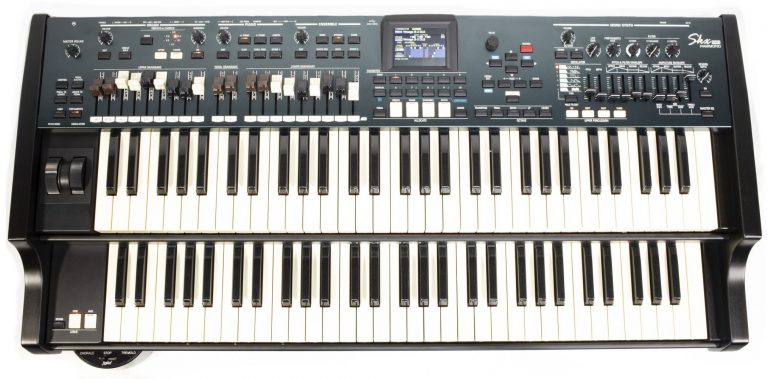
The SkxPRO is an unbelievable value, putting a truly portable dual manual Hammond in the hands of musicians who never thought such a beast would ever be born.
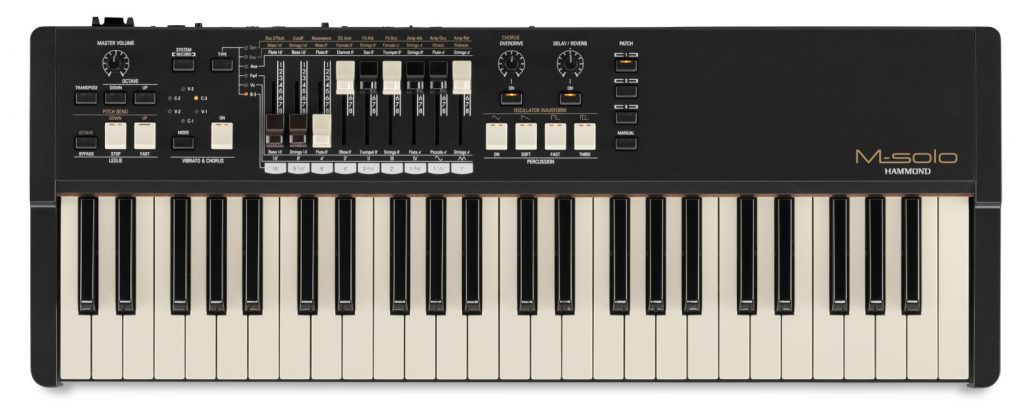
Hammond M-solo
The revolutionary M-solo is the smallest and lightest (8 lbs) true Hammond Organ ever produced. It puts the Hammond legend under the fingers of ALL musicians.
In the 21st Century, Hammond and Leslie have come full circle. The B-3 sound is everywhere. There are more imitators than you can count. It now seems that everyone makes a B-3 “clone”, but pros and hobbyists alike overwhelmingly prefer Modern Hammond Products.
The Hammond/Leslie legacy lives on, stronger than ever. If you were once a member of the Hammond Family, it’s time to come home, and if you are with us currently, thank you for playing the King Of Instruments.
